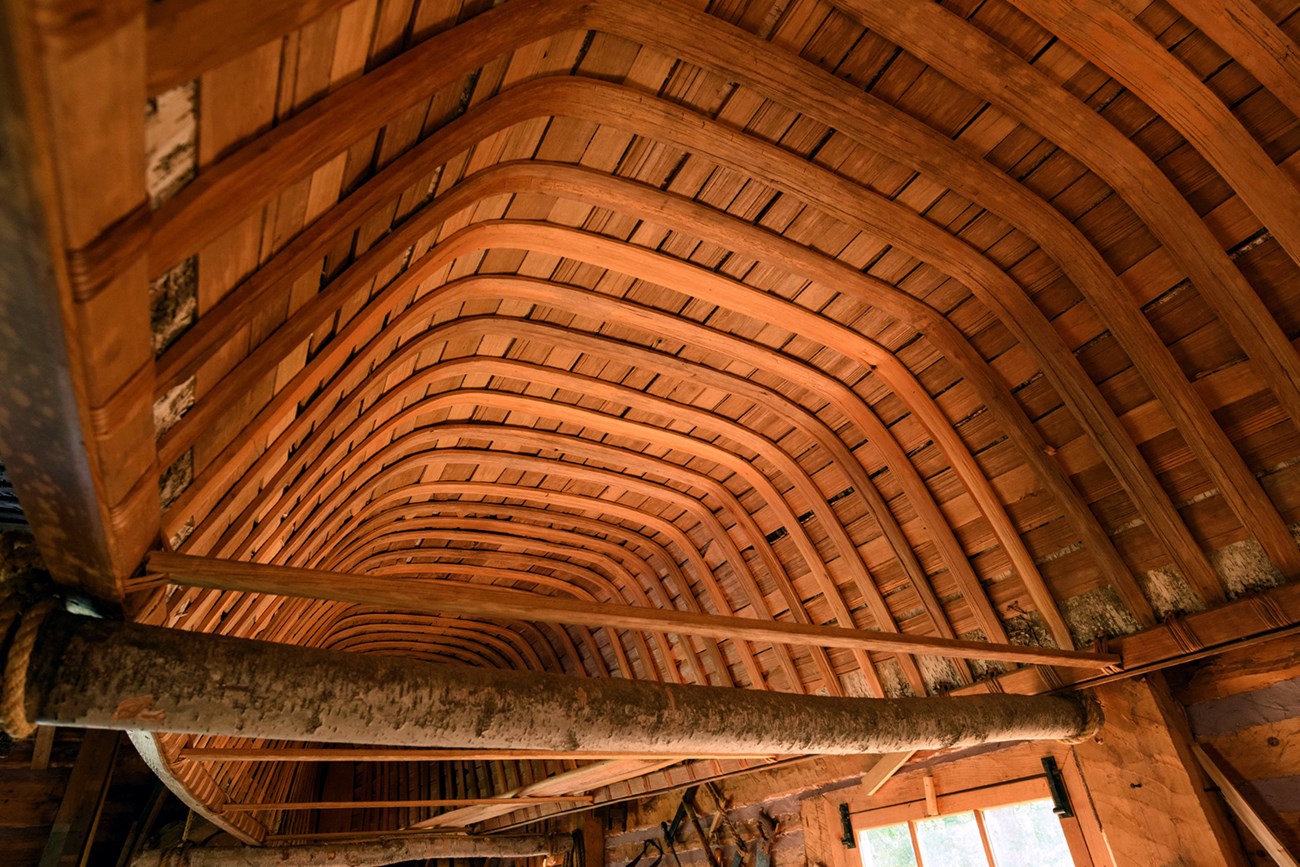Last updated: December 10, 2024
Article
Canoes of Grand Portage

NPS Photo
Canoes of the Fur Trade Era
Chances are you traveled to Grand Portage National Monument today in some type of motorized vehicle. A few of you arrived by bicycle, fewer still walked. Following modern transportation corridors, you approached Grand Portage from the south or the north. Imagine that you are approaching this focal point of the fur trade during its pinnacle around 1797. If you came from Montreal, you traveled from Sault Ste. Marie either in a sailing schooner or a 36’ canot du maître (master or Montreal Canoe), following a route along Lake Superior’s north shore. After a brief stop on the north side of Hat Point to clean up, you approached the depot from Grand Portage Bay, came ashore, and walked through the lakeside gates. From the western interior pays d’en haut (up-country) of Canada, you paddled a 24’ canot du nord (North Canoe) down the Pigeon River from South Fowl Lake to Fort Charlotte, then trod Gichi Onigaming (Great Carrying Place) nine miles to the stockade’s back gate.
As the fur trade pushed farther into western Canada, Grand Portage became a pivotal location. In the early days of the trade, business could be conducted as a there-and-back between Montreal and fur traders. Once the distance grew too great for a round trip in a single season, it required a new model with a rendezvous point in the middle to exchange goods. The large lakers, the canots du maître, were specially constructed for the fur trade to bring trade goods from all over the world to the Grand Portage depot. The smaller canots du nord, more suited to river travel, arrived at Fort Charlotte with furs acquired over the winter. The voyageurs made the exchange by carrying the bales of furs or trade goods over the Grand Portage trail. Each type of canoe would return home with the opposite cargo. In this way business could continue in one season with two halves of the enterprise coming together at the North West Company’s summer headquarters on Lake Superior.

NPS Photo / G.M. Spoto
Jiimaan
Birchbark canoes are one of the most recognizable symbols of Native American and First Nation cultures. All of the raw materials (birch bark, cedar and spruce root, plus spruce pitch, bear grease, soot mixed together to seal the seams) come from the Boreal Forest in the northern part of the continent. Traditional canoe building knowledge passed orally and by demonstration from generation to generation to create canoes that were durable, functional, and elegant. To produce quality canoes efficiently, labor was divided – men fabricated wooden elements and assembled canoes, women lashed and gummed them. Jiimaanan can be different shapes according to their function. Ricing canoes, for example, are flatter to navigate shallower water and are propelled with poles to protect the fragile plants.
Anshinaabe/Ojibwe people crafted birchbark jiimaan (canoes) for the fur trade. A North Canoe was equal to about 25 beaver hides worth of trade goods. The recreated historic depot warehouse at Grand Portage National Monument houses examples of fur trade and Anishinaabe canoes as well as their raw materials – birchbark, split cedar, spruce root, and sealant (spruce pitch, bear grease, soot), all harvested locally by staff. Often one is under construction over the course of the summer!
